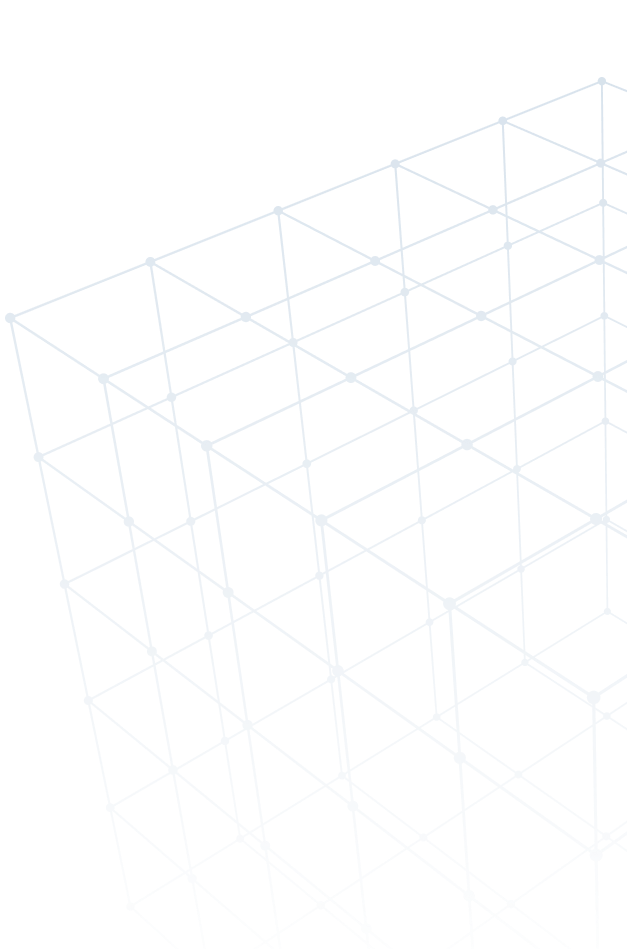Cybersecurity solutions for federal government
Cybersecurity solutions for federal governments can be complex. As a visible target facing unique budget cycles and resource constraints, your team needs simplified cyber solutions to support your mission. Our cybersecurity solutions for governments generate valuable insights built on extensive federal government cybersecurity experience.



Overcome challenges with federal talent shortages
When your team is overworked or lacks specialized skills, our seasoned federal cybersecurity experts are ready to help. We understand the unique needs and regulations your federal organization faces, and we are dedicated to ensuring your programs and projects meet these requirements. Let us support you in maintaining the highest standards of security and compliance for your federal cybersecurity program.
13 min
The amount of time it took to identify the first vulnerability at the Pentagon during a federally sponsored bug bounty event (Deloitte)
3.5M
The number of unfilled cybersecurity jobs in 2023 (AP News)
74%
The percentage of federal agencies with cybersecurity programs either at risk or high risk (whitehouse.gov)
NuHarbor’s advanced 24/7 monitoring and engineering expertise in managing security alerts, dashboards, and data integration, with world class customer service has created a true partnership with us as their team feels like an extension of ours. Working with NuHarbor, knowing our systems are being monitored and managed by their team of expert analysts, gives us confidence in our ability to respond to potential incidents. NuHarbor’s engineering expertise provides us with customized dashboards and regular updates, which keep us informed and empowered to make smarter security decisions.
NuHarbor helped us identify the correct assets to monitor, then tuned our systems for maximum results. Now we only receive notifications for true positive alerts so my team can spend more time focusing on their objectives.
We’ve utilized NuHarbor for a few years now to conduct quarterly vulnerability assessments. Our usual policy is to change vendors every few years, but we’ve had such exceptional service from NuHarbor that we see no need to shop around. The reports we receive are comprehensive and prioritize remediation advice.
NuHarbor conducted a web application penetration test on a few of our edge applications. They discovered many configuration weaknesses including insecure direct object reference (IDOR). They notified us immediately and offered advice on how to fix it. Their skilled engineers provided step-by-step assistance and retested to ensure that this critical vulnerability was fixed.
Wifi. Yeah, that’s an unfamiliar animal to deal with. We hired NuHarbor to test the wireless networks we provide for our employees and customers to access store services. NuHarbor came onsite and set up their “toolkit” with antennas sticking out all around. They were able to set up a rogue access point, mimicking our access points, and users unknowingly logged on. NuHarbor initiated an evil twin attack to capture and inject packages into the network stream between user computers and other systems and then delivered findings so we could educate and curve our user behavior.
NuHarbor performed an external penetration test on our networks and alerted us to critical vulnerabilities. They let us know what the affected response might be from the host before they tried to exploit it. We were updated twice a day which was super helpful to me and my staff. They also provided great remedial guidance that helped us quickly correct vulnerabilities.
Our company outsources our web development. We asked NuHarbor to review the source code and check for insecure API calls. We were astonished at the findings they uncovered. It was an uneasy feeling knowing that the web developer we hired left so many security flaws in our code. I can’t say enough how comforting it was to have the NuHarbor team give us, and our partner, clear recommendations to fix our source code.
NuHarbor waged a phishing campaign against our employees by mirroring a realistic payroll website that we use in our company. The NuHarbor engineers captured several IT administrators’ credentials. With domain administrator access, they were able to compromise our whole domain within 20 minutes of starting the phishing campaign. We had the opportunity to show our leadership how pertinent it is to implement better user account practices, MFA, and improved user security awareness training and build the funds into our annual IT security budget.
NuHarbor performed an internal penetration test of our organization utilizing one of our legacy network protocols. They were able to gain administrative access and push malicious code to our network. Had this been a real attack, we could have lost everything.
NuHarbor assessments provide visibility into our third-party risk exposure. We don’t have the internal resources to conduct yearly assessments of our 40+ vendors. These valuable insights inform the decisions we make when choosing and managing partnerships.
NuHarbor has been instrumental to our SOC operations. Without their flexibility, expertise, and quick reaction, our small SOC team could not operate. NuHarbor continually engages with us at the operational and executive level. They’re always looking for new, creative solutions. Not only are they willing to think outside the box, they actually deliver.



Translate data to the masses
We translate complex cybersecurity topics into easy-to-understand and meaningful statistics, headlines, and recommendations. Our services benefit the public in a way that is meaningful and attractive to elected officials. We offer security services harnessing the best technology available including CrowdStrike, Microsoft Sentinel and Defender, Recorded Future, Splunk, Tenable, and Zscaler.
- Fully managed security operations center (SOC)
- Risk assessments and ongoing risk management
- Gap assessments aligned with compliance requirements
- Audit support
- Vulnerability scans
- Incident response planning
- Policy procedure development
- Bi-weekly reports of high-level data
Our services make it easy to solve your hardest problems
We make it easy to identify and limit the risk of threats without the need for additional staffing
We make it easy to test your defenses—we’re the good hackers for hire
We make it easy to meet compliance requirements and strengthen security posture with actionable recommendations
We make it easy to identify risk and provide meaningful cybersecurity advice so you can plan your business
-
We make it easy to identify and limit the risk of threats without the need for additional staffing
-
We make it easy to test your defenses—we’re the good hackers for hire
-
We make it easy to meet compliance requirements and strengthen security posture with actionable recommendations
-
We make it easy to identify risk and provide meaningful cybersecurity advice so you can plan your business
We make it easy to improve and manage your security
We believe great cybersecurity exists at the intersection of exceptional service delivery and purposeful deployment of security solutions.
-
Easy to understand
Our security experts are trained to support and communicate in ways you can understand. Cybersecurity solutions are created to answer your questions on your terms.
-
Easy to choose
We have an established reputation as security and technology leaders. With a clear definition of cybersecurity outcomes for your business, you can make the best decisions to secure your organization.
-
Easy to trust
We deliver clear and consistent communication. Paired with our trusted operations and reporting, your stakeholders can have peace of mind in their cybersecurity decisions.
Frequently asked questions
-
Governments around the world have become prime targets for cyberattacks. One major reason is that governments store and manage vast amounts of sensitive information. This data ranges from personal information of citizens to classified national security details. Access to such information can be incredibly valuable to attackers, whether for financial gain, espionage, or larger geopolitical strategies.
Critical infrastructure overseen by governments, such as power grids, water supplies, transportation systems, and communication networks, is crucial to the functioning of a nation. Disrupting these systems can cause widespread chaos and have significant economic and societal impacts. Cyberattacks targeting critical infrastructure can act as powerful tools for adversaries aiming to destabilize a country.
The complexity of interconnected agencies and departments within governments, each with its own IT systems and networks, creates vulnerabilities. Different systems may have varying levels of security measures and protocols, providing attackers with weak points to exploit. Once inside, attackers can move laterally across networks, increasing the chances of a successful breach.
The increasing use of digital technologies and online services by governments to improve efficiency and accessibility has expanded the attack surface. While these advancements bring numerous benefits, they also introduce new vulnerabilities that attackers can exploit.
Governments are responsible for enforcing laws and regulations, including those related to cybersecurity. This role can make them a target, as successful cyberattacks can undermine public trust in a government’s ability to protect its systems and data, let alone that of its citizens and businesses.
Finally, state-sponsored actors find government targets appealing due to the potential for strategic advantages. These attackers are often well-funded and highly skilled, seeking to gather intelligence, disrupt operations, or influence political outcomes. Motivations behind such attacks range from economic espionage to undermining national security.
-
Governments face a wide array of cyberthreats that require strong and multifaceted security measures to ensure the protection of sensitive data, critical infrastructure, and public trust. Here are the key types of protection and security measures governments may need to defend against these threats.
Advanced threat detection, response, and monitoring
Governments need sophisticated threat detection systems capable of identifying, responding to, and monitoring both known and unknown threats in real time. This includes using advanced analytics, machine learning, and artificial intelligence to detect anomalies and potential breaches quickly. Implementing security information and event management (SIEM) systems can centralize and streamline threat detection and response processes.
Endpoint security
Protecting individual devices such as computers, smartphones, and tablets is crucial, as these endpoints can serve as potential entry points for cyberattacks. Endpoint security solutions include antivirus software, anti-malware tools, and endpoint detection and response (EDR) systems that monitor and protect devices from malicious activities.
Network security
Securing the network infrastructure is essential to prevent unauthorized access and data breaches. Network security measures include firewalls, intrusion detection and prevention systems (IDPS), virtual private networks (VPNs), and network segmentation to isolate sensitive data and systems from broader network traffic.
Data encryption
Encryption is vital for protecting sensitive data at rest and data in transit. Governments should implement strong encryption protocols to ensure that data remains secure and inaccessible to unauthorized users, even if it is intercepted or accessed without permission.
Identity and access management
Effective identity and access management (IAM) solutions help control who has access to what information within government systems. This includes implementing multi-factor authentication (MFA), single sign-on (SSO), and role-based access control (RBAC) to ensure that only authorized personnel can access sensitive data and critical systems.
Security audits and assessments
Conducting regular security audits and assessments helps identify vulnerabilities and weaknesses within government systems. These assessments should include penetration testing, vulnerability scans, and compliance checks to ensure adherence to security policies and regulations.
Incident response planning
Having a well-defined incident response plan is crucial for minimizing the impact of cyberattacks. This plan should outline the steps to be taken if a breach occurs, including communication protocols, roles and responsibilities, and recovery procedures. Regularly updating and testing the incident response plan ensures preparedness for potential cyber incidents.
Employee training and awareness
Human error is a significant factor in the vast majority of cyberattacks. Regular training and awareness programs can educate government employees about the latest cyberthreats, phishing scams, and best practices for maintaining security. This helps create a security-conscious culture and reduces the likelihood of successful attacks.
Secure software development
Governments must ensure that the software they develop or use is secure. This involves incorporating security best practices into the software development lifecycle (SDLC), including code reviews, automated testing for vulnerabilities, and continuous integration/continuous deployment (CI/CD) pipelines that prioritize security.
Physical security
Protecting the physical infrastructure that supports IT systems is also critical. This includes securing data centers, server rooms, and other facilities against unauthorized access, natural disasters, and other physical threats. Measures such as surveillance cameras, access control systems, and environmental controls (e.g., fire suppression and climate control) are important components of physical security.
-
Government security teams are tasked with protecting vast and complex IT environments from an evolving landscape of cyberthreats. Despite advancements in cybersecurity technologies and practices, government teams face numerous challenges that can complicate efforts to safeguard sensitive data and critical infrastructure.
Evolving threat landscape
Cyberthreats are continuously expanding in sophistication and complexity. Attackers are constantly developing new methods to bypass security measures, making it difficult for government security teams to stay ahead of threats. The rapid pace of technological change requires ongoing vigilance and adaptation to new threat vectors.
Resource constraints
Many government agencies operate with limited budgets and resources. This can result in understaffed security teams and inadequate funding for necessary cybersecurity tools and training. Resource constraints make it challenging to implement and maintain comprehensive security measures, conduct regular audits, and respond effectively to incidents.
Legacy systems
Government agencies often rely on legacy systems not designed with modern cybersecurity threats in mind. These outdated systems can have vulnerabilities that are difficult to patch or secure. Integrating legacy systems with newer technologies can also create additional security challenges.
Compliance and regulatory requirements
Governments must comply with a variety of regulatory and compliance requirements, which can be complex and time-consuming. Ensuring adherence to standards such as the General Data Protection Regulation (GDPR), the Federal Information Security Management Act (FISMA), and other local or international regulations requires significant effort and resources.
Insider threats
Insider threats, whether from malicious actors or unintentional actions by employees, pose a significant risk to government security. Detecting and mitigating insider threats requires vigorous monitoring and access controls, and a strong culture of security awareness among employees.
Coordination across agencies
Government operations often involve multiple agencies and departments, each with its own IT systems and security protocols. Coordinating cybersecurity efforts across these diverse entities can be challenging, especially when it comes to sharing threat intelligence, standardizing practices, and ensuring consistent security measures.
Advanced persistent threats
State-sponsored attackers and other well-funded adversaries often use advanced persistent threats (APTs) to infiltrate government networks. These attackers are highly skilled and patient, employing sophisticated techniques to maintain a long-term presence within a network. Detecting and eliminating APTs requires advanced tools and expertise.
Data privacy concerns
Balancing the need for strong cybersecurity measures with the protection of citizens' privacy is a delicate task. Government security teams must ensure that their actions comply with privacy laws and do not infringe on individuals' rights, which can complicate data monitoring and analysis efforts.
Skill shortages
The cybersecurity field faces a significant shortage of skilled professionals. Government agencies may struggle to attract and retain qualified cybersecurity experts, especially when competing with the private sector. This skill gap can hinder the ability to effectively implement and manage security measures.
Rapid incident response
Responding quickly and effectively to cyber incidents is critical to minimizing damage. However, the complexity of government networks and the potential scale of attacks can make rapid incident response challenging. Having a well-defined and practiced incident response plan is essential but executing it in real time and under pressure can be difficult.
-
Partnering with a trusted third-party cybersecurity provider can offer numerous benefits to federal government agencies seeking to enhance their cybersecurity posture and resilience. These security partners bring specialized expertise, advanced technologies, and tailored solutions to address the unique challenges faced by government entities.
Specialized expertise
Third-party cybersecurity providers, or managed security service providers (MSSPs), offer specialized expertise in identifying, assessing, and mitigating cyberthreats. They bring in-depth knowledge of the latest cybersecurity trends, technologies, and best practices, gained from working with a diverse range of clients across various industries. This expertise enables them to develop tailored solutions that address the specific cybersecurity needs and challenges of federal government agencies.
Advanced technologies
Cybersecurity providers leverage advanced technologies and tools to detect, prevent, and respond to cyberthreats effectively. These technologies include next-generation firewalls, intrusion detection and prevention systems (IDPS), security information and event management (SIEM) platforms, and endpoint detection and response (EDR) solutions. By leveraging these technologies, federal government agencies can enhance their security posture and better protect their sensitive data and critical infrastructure from cyberattacks.
Comprehensive solutions
Third-party cybersecurity providers offer comprehensive solutions that cover the entire cybersecurity lifecycle, from risk assessment and vulnerability management to incident response and recovery. These solutions include security assessments, penetration testing, security awareness training, security operations center (SOC) services, and managed detection and response (MDR) services. By outsourcing cybersecurity to a third-party partner, federal government agencies can access a wide range of expertise and resources without needing significant upfront investment.
Scalability and flexibility
Cybersecurity needs can vary greatly depending on factors such as agency size, mission-criticality, and budget constraints. Third-party cybersecurity providers offer scalable and flexible solutions that can be tailored to meet the specific needs and requirements of federal government agencies. Whether agencies require basic security services or advanced threat hunting capabilities, third-party partners can adjust their offerings to accommodate changing needs over time.
Regulatory compliance
Federal government agencies must comply with various regulatory and compliance requirements related to cybersecurity, privacy, and data protection. Third-party cybersecurity providers can help agencies navigate these complex regulatory landscapes and ensure adherence to applicable laws and regulations. By partnering with a trusted provider, agencies can minimize the risk of non-compliance and avoid costly penalties.
Cost savings
Outsourcing cybersecurity to a third-party provider can result in significant cost savings for federal government agencies. Instead of investing in expensive cybersecurity technologies, hiring and training specialized personnel, and maintaining internal security operations, agencies can leverage the expertise and resources of a third-party partner at a fraction of the cost. This cost-effective approach allows agencies to allocate their limited budgets more efficiently and focus on their core missions.

Strategic partners
We make it easy to tackle whatever comes next. We deliver the most comprehensive set of integrated security services in the market by harnessing the best technology available.


Resources
We make understanding and staying up to date with cybersecurity trends easier. By sharing our robust expertise, knowledge, and tools, we help you protect what matters most.

Explore comprehensive cybersecurity protection today.
-
Consult with an expert
Talk to one of our cybersecurity experts so we can better understand your needs and how we can help.
-
Agree on a plan
Based on your objectives we’ll create a tailored plan to meet your cybersecurity needs.
-
Start maximizing your protection
Experience peace of mind knowing what matters most is secure.

